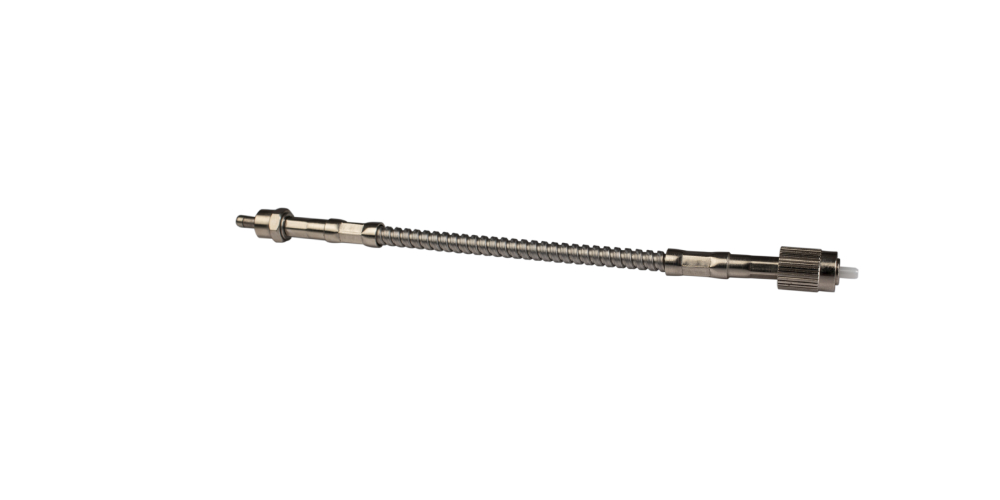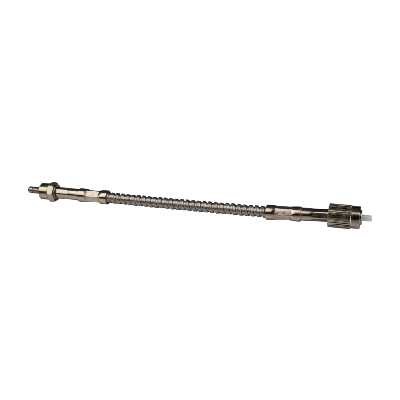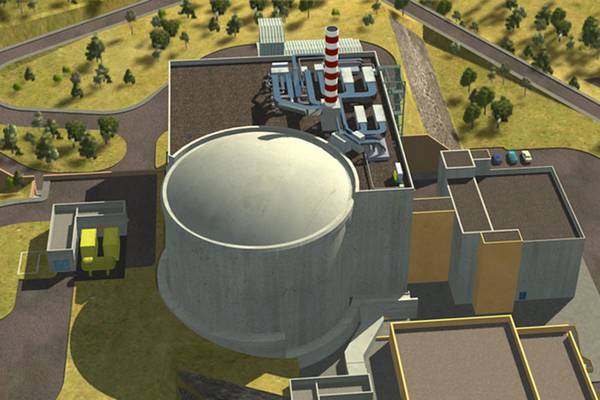Optical fibers gather numerous advantages encouraging to integrate them in applications with radiative environments, associated with the civil, space or defense fields.
Fiber opticCable
Producing radiation-resistant optical fiber cords
Optical fibers gather numerous advantages encouraging to integrate them in applications with radiative environments, associated with the civil, space or defense fields. However, standard silica optical fibers are vulnerable in a nuclear environment.

KeyFeatures
- Rad-hard singlemode or multimode GI 50/125 µm fiber,
- Radiation resistance > 1 GGy,
- Immunity to electromagnetic effects,
- FC/PC, ST/PC or SMA connector depending on the fiber,
- Soldered assembly (no polymer),
- Temperature range: -60 °C to +150 °C depending on the fiber,
- Spectral range: VIS/NIR.
Indeed, when exposed to a high radiation environment for an extended period, such as in a nuclear facility, conventional silica optical fibers suffer from a transitory increase of the Radiation-Induced Attenuation (RIA): the electrons are trapped in the glass due to ionizing radiation, resulting in the degradation and loss of signal.
Moreover, it takes time for the fiber optic to recover from the radiation after the radiation source is removed. Depending on the light sources, radiation doses, and temperature, the fiber may or may not completely recover to its original state.
SEDI-ATI has designed innovative fiber-optic cables and assemblies that withstand extreme irradiation conditions. We partner with renowned fiber-optic manufacturers to co-develop special preforms to draw unique singlemode and multimode optical fibers with outstanding properties!
We can design different types of radiation-resistant fiber assemblies such as bundles, bifurcated bundles, fan-outs, integrated hermetic feedthroughs, and even seal sapphire windows at one end of the assembly.
Case studies
Inspect: online and remote dosimetry for inspecting nuclear equipment
SEDI-ATI took part in the INSPECT project by supplying a bundle of 16-channel optical fibers for instrumentation to measure the level of radioactivity in nuclear equipments.
Scintillating fiber dosimeter for radiology
SEDI-ATI designs scintillating fiber optic probes for dosimeter applications applied to radiology.
Real-time detection of contaminants in drinking water using scintillating fibers
SEDI-ATI has developed a bundle of scintillating plastic optical fibers to do real-time detection of nuclear contaminants in drinking water.
Optical measurement of the water level in nuclear reactor pools
SEDI-ATI offers nuclearized fiber-optic assemblies that perform optical time-of-flight measurement of the water level of nuclear reactor pools.
Fiber-optic probes at the heart of the Jules Horowitz Reactor
SEDI-ATI has designed custom-made fiber-optic probes to be placed at multiple locations inside the Jules Horowitz Reactor.






